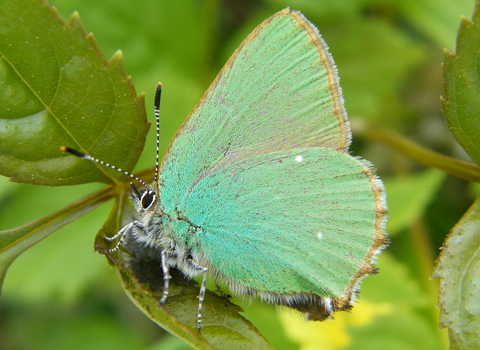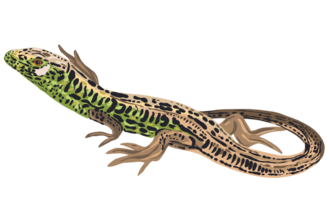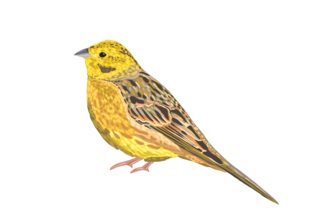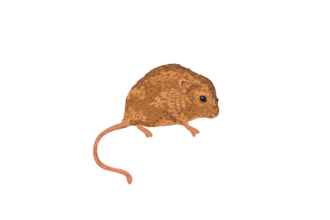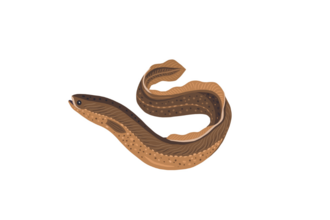These small, delicately marked insects enliven our countryside and are an integral part of our ecosystem - and they need our help.
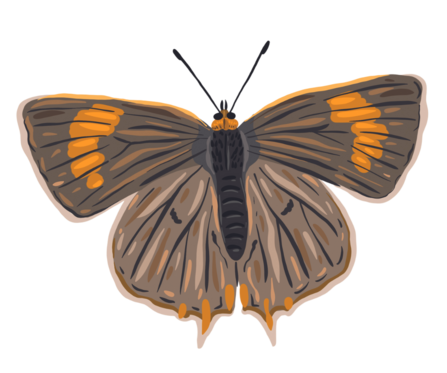
Bea Baranowska Illustrations
Hairstreak butterflies are found in a spectrum of colours, with most species sporting defining hair-thin markings which adorn the underside of their delicate wings. There’s nothing like the sight of these vibrant invertebrates on the wing on a warm summer’s morning. Five species of this tiny butterfly reside in the UK and four are native to Surrey, but at ground level we most often see Green and Brown Hairstreaks.
The Green Hairstreak Callophrys rubi boasts the title of ‘UK’s only green butterfly’, and it doesn’t disappoint in person. You might spot them perched on vegetation or sunning their wings in grassland or along woodland rides. They always rest with their wings closed, flaunting an iridescent green sheen with a line of faint white dots on the underside. With a varied range of foodplants, Green Hairstreaks can live in several different habitats and are the most common hairstreak butterfly.
Larger than its green counterpart, the Brown Hairstreak Thecla betulae boasts brown upperwings, luminous amber underwings and vivid orange ‘tail extensions’. Take the time to look up, and you might catch sight of this elusive butterfly flitting around prominent Ash trees and feeding on aphid honeydew. The females – with a broad orange bar on each forewing – can be seen scattered along hedgerows where they lay conspicuous (yet tiny) white eggs on young Blackthorn shoots.
Why they matter
The decline of Surrey’s hairstreaks echoes the wider deterioration of all invertebrate life. Hairstreaks represent the small, delicate species that are quietly slipping away. Habitat destruction has led to the rapid and drastic decline of these once-flourishing insects. The Brown Hairstreak population has declined by almost half since the 1970s – a consequence of the hedgerow vanishing act we’ve seen unfold over the last 60 years. With the loss of scrubby and hedgerow Blackthorn, the Brown Hairstreak has struggled to search out its caterpillar food-plant, to devastating effect. Annual flailing has also contributed to their dwindling numbers, with over-frequent hedge cutting jeopardising and often eradicating Brown Hairstreak colonies. The Brown Hairstreak is now listed as a top conservation priority, while the Green Hairstreak is also in decline.
At Surrey Wildlife Trust, we’re working hard to save species like hairstreak butterflies from extinction – but we can’t do it alone.
How we’re helping
It isn’t too late. Careful habitat restoration and management can help breathe new life into our landscapes. Across our reserves, we’re tailoring our management practices to benefit existing and encourage new hairstreak butterfly populations to thrive. For example, at Newdigate Brickworks we conducted a survey for Brown Hairstreak eggs and our reserves team coppiced mature Blackthorn on site, leaving behind the younger age structures which Brown Hairstreaks prefer. We’re also working with landowners through initiatives like the Hedgerow Heritage project to restore, replenish and connect Surrey’s hedgerows with the help of our dedicated group of volunteers. Green Hairstreaks benefit from good grassland, ride, and heathland management – all of which our reserves team are consistently delivering at our sites across Surrey.
We believe that food production and nature can coexist harmoniously, and we’re supporting our fantastic local farmers to find alternatives to the intensive farming practices that have damaged our habitats and detrimentally impacted our wildlife. All of this is expensive, and the only way to reverse nature’s decline is to align our objectives and combine our resources. We’re nature’s only insurance policy, and we need to work together to build a better future for people and wildlife.
Other species in need
The decline of species like the Nightingale, Yellowhammer, and European Eel is not just a concern – it’s a call to action. These iconic creatures, along with others like the Harvest Mouse and hairstreak butterflies, need our help to thrive once again in their natural habitats. To find out more about each of these species and how we're helping them, click below.

